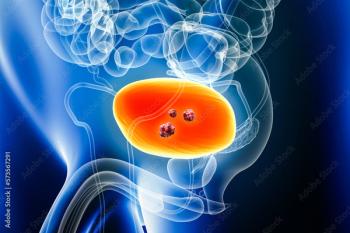
CDC Diagnosis: Last Flu Season Was Extremely Mild
The 2011-2012 flu season saw relatively low rates of hospitalization for influenza and a low rate of deaths attributed to pneumonia and influenza.
The 2011-2012 flu season saw relatively low rates of hospitalization for influenza and of deaths attributed to pneumonia and influenza.
The 2011-2012 influenza season was among the mildest and latest on record, according to an
The 2011-2012 influenza season ran from October 2, 2011, to May 19, 2012. The weekly portion of outpatient visits for suspected influenza in a nationwide surveillance network peaked at 2.4% in the week ending March 17, 2012, the latest peak in more than 2 decades. By comparison, the peak portion was 3.6% in the 2008-2009 season, 7.7% in the 2009-2010 season (which included the H1N1 pandemic), and 4.5% in 2010-2011.
The cumulative hospitalization rate (per 100,000 people) in the 2011-2012 season for confirmed influenza was 8.6 for all age groups, 14.2 among those 4 years of age and younger, 4.2 among those aged 5 to 17 years, 4.1 among those aged 18 to 49 years, 8.5 among those aged 50 to 64 years, and 30.4 among those aged 65 years and older. By comparison, over the last 3 seasons, the hospitalization rate for confirmed influenza has ranged from 35.5 to 72.8 for those 4 years of age and younger, 6.4 to 27.3 for those aged 5 to 17 years, 3.6 to 23.1 for those aged 18 to 49 years, 5.1 to 30.8 for those aged 50 to 64 years, and 13.5 to 65.9 for those aged 65 years and older.
In 2011-2012, the portion of deaths attributed to pneumonia and influenza exceeded the epidemic threshold for just 1 week, peaking at 7.9% during the week ending January 21, 2012. In the last 3 seasons, the number of consecutive weeks above the epidemic threshold has ranged from 3 to 13. There were also 26 pediatric deaths confirmed to be associated with influenza. Of these, 6 were associated with influenza B, 5 with influenza A (H3N2), 7 with influenza A (pH1N1), 7 with influenza A of undetermined strain, and 1 with an undetermined virus type. By comparison, there were 122 influenza-related pediatric deaths during the 2010-2011 season, 348 during the 2009 H1N1 pandemic (from April 15, 2009, through October 2, 2010), and 67 during the 2008-2009 season.
Of 22,417 positive influenza samples tested by labs during the 2011-2012 season, 86% were influenza A viruses and 14% were influenza B viruses. Of the influenza A viruses that were subtyped, 74% were influenza A (H3N2) viruses, and 26% were influenza A (pH1N1) viruses. There have also been 13 cases of novel swine-origin influenza A (H3N2) variant virus reported since August 2011, 1 in an adult and 11 in children, resulting in 3 hospitalizations but no deaths.
Of 2576 influenza virus specimens tested for resistance to the antiviral medications oseltamivir and zanamivir, none of the influenza B or influenza A (H3N2) specimens had resistance to either medication. Among 1614 influenza A (pH1N1) viruses tested for resistance to oseltamivir, however, 16 (1.4%) were resistant, although none of the 518 influenza A (pH1N1) viruses tested for resistance to zanamivir were resistant. In addition, the authors note that high levels of resistance to amantadine and rimantadine continue among influenza A (pH1N1) and influenza A (H3N2) viruses around the world.
Newsletter
Stay informed on drug updates, treatment guidelines, and pharmacy practice trends—subscribe to Pharmacy Times for weekly clinical insights.












































































































































































































